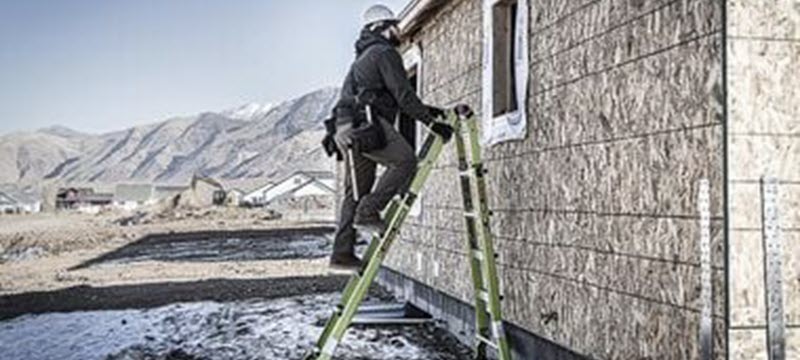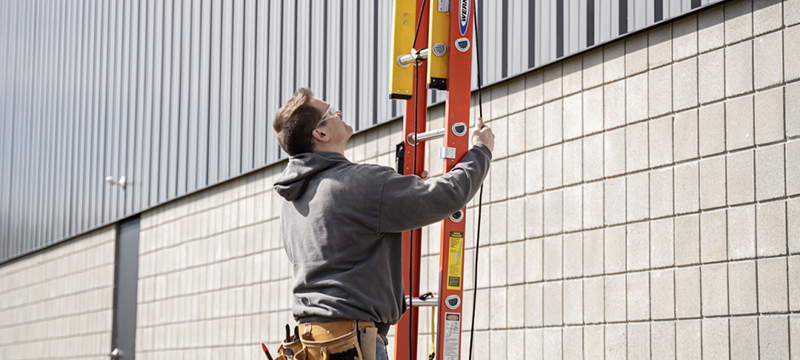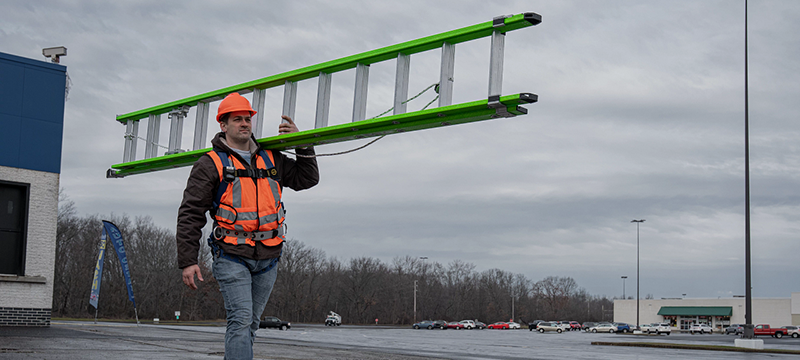Ladders provide a range of practical and important uses in various industries, from construction and maintenance to home renovation and DIY projects. There are different types of ladders, each with unique features and benefits. This article takes a closer look at these along with their uses.
Step Stools
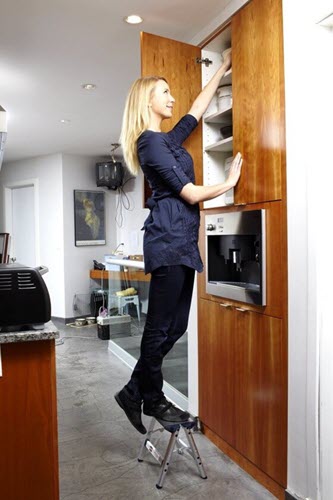
Step stools are compact and versatile, serving a variety of uses around the house, workplace, or even outdoors. They provide a stable platform for reaching objects or accessing higher areas safely.
Step stools are typically lightweight and portable, and come in different sizes and materials. These include plastic, wood, and metal, with features for different preferences and needs.
Most stools have a sturdy construction along with non-slip surfaces that enhance their stability and safety. Some step stools have extra safety features such as handrails or grip handles for added support.
Step stools are suitable for tasks such as reaching high shelves, changing light bulbs, or performing minor repairs. They are a practical addition to the kitchen and the garage.
When using a step stool, make sure to set it on a level surface, and that it’s fully opened and locked into place. Always maintain three points of contact by having both feet and one hand on the stool while standing on it. Avoid overreaching or standing on the top cap or the highest step for safety.
Step Ladders
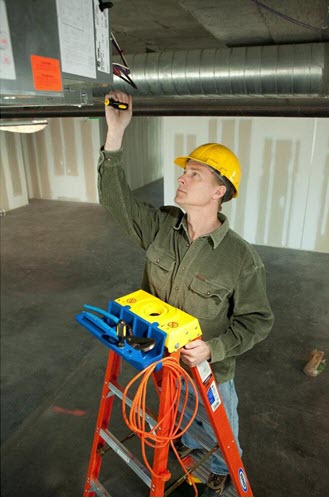
This most used type of ladder is self-supporting, and usually with a folding frame, which means that you can store it easily. Step ladders are versatile and can be used for different of tasks, including painting, changing light bulbs, and accessing high shelves.
There are two types of step ladders: single-sided and double-sided. Single-sided ladders have rungs on one side only, while double-sided ladders have rungs on both sides, which makes them more stable.
Just like step stools, make sure that the step ladder is open fully and locked when in use. Avoid standing on the top rung or the paint tray, which can cause the ladder to tip over.
Extension Ladders
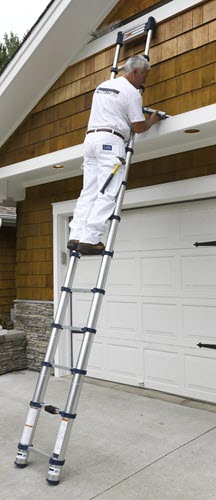
Extension ladders perform well in outdoor maintenance and construction work. They are typically made of aluminum or fiberglass, and they extend to reach heights of up to 60 feet.
Extension ladders are ideal for tasks such as cleaning gutters, roofing, and painting walls. They are also used in construction and industrial settings to access high areas and work on scaffolding.
When using an extension ladder, you should ensure that the ladder is properly secured and that you maintain three points of contact at all times. You should also avoid using an extension ladder in areas with strong winds.
Rolling Ladders
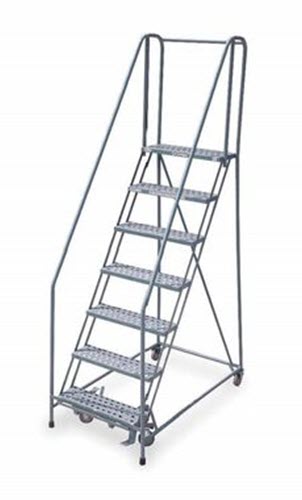
Rolling ladders have wheels on their bottom that lets you move them with ease. They are often used in libraries, warehouses, and other industrial settings.
Rolling ladders can be either straight or curved, depending on the type of space they will be used in. These ladders are usually made of steel and are available in a variety of sizes.
Ensure that the locking mechanism is engaged and is stable when using this type of ladder. Avoid using these ladders on uneven surfaces or soft ground.
Multi-Position Ladders
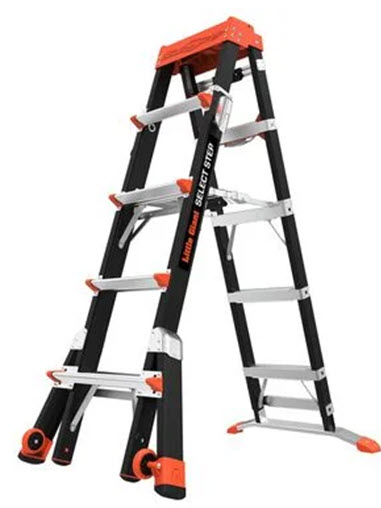
Multi-position ladders are a type of ladder that can be used as both a step ladder and an extension ladder. You’ll see this versatile type of ladder perform well in construction and industrial settings.
Multi-position ladders typically have three or four positions: A-Frame, extension, trestle, and stairway. The A-Frame position is like a step ladder, while the extension position allows the ladder to be used at heights of up to 18 feet.
Ensure that the locking mechanism is engaged before ascending a multi-position ladder. Avoid using it on soft and uneven ground.
Attic Ladders
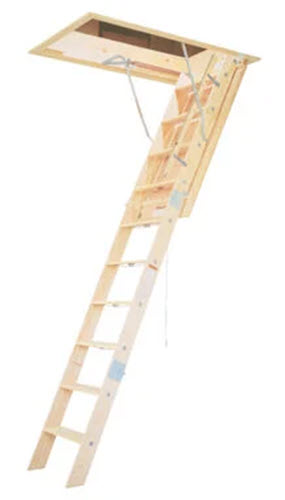
As their name implies, attic ladders are a type for accessing attics or crawl spaces. They are usually installed permanently and fold up into the attic ceiling when not in use, providing easy access to overhead spaces.
Attic ladders are available in various designs, including folding, telescopic, and sliding. They are often made of lightweight but sturdy materials such as aluminum or wood.
These ladders are especially useful for homeowners who need occasional access to their attic for storage or maintenance. Attic ladders provide a safe and convenient way to navigate tight spaces and ensure easy access to overhead areas.
Check the manufacturer’s weight and capacity guidelines to avoid overloading the ladder. Always make sure that it is fully extended and locked prior to use.
Fire Escape Ladders
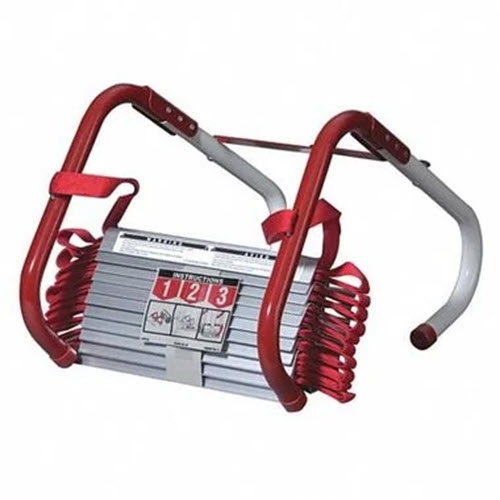
Fire escape ladders are a crucial safety feature in residential buildings, providing a quick and safe means of escape during emergencies such as fire. These specialized ladders are designed to be easily deployed from windows or balconies, allowing occupants to evacuate from upper floors. Fire escape ladders come in various types, including portable ladders and permanent ladders. Portable fire escape ladders are compact and can be stored near windows or in designated areas. Permanent fire escape ladders are fixed to the exterior of a building as a permanent escape route.
When choosing a fire escape ladder, it is important to consider factors such as the height of your building and the number of floors you need to reach. Ensuring that the ladder can support the weight of multiple occupants is also important. Conduct regular maintenance and inspections of fire escape ladders to check for optimal functionality at all times. Check the ladder’s stability, connections, and overall condition periodically.
Due to the critical role fire escape ladders play in saving lives, it is vital for occupants of multi-story buildings to familiarize themselves with the location of escape ladders and understand how to deploy and use them correctly. Regular fire drills and proper emergency planning are integral to being prepared for any potential emergency.
Choosing the right ladder for the job ensures efficiency and safety. By understanding the different ladder types and their uses, you’ll be able to choose one that best suits your needs. Always follow proper ladder safety procedures and guidelines when using any type of ladder to prevent accidents and injuries.

